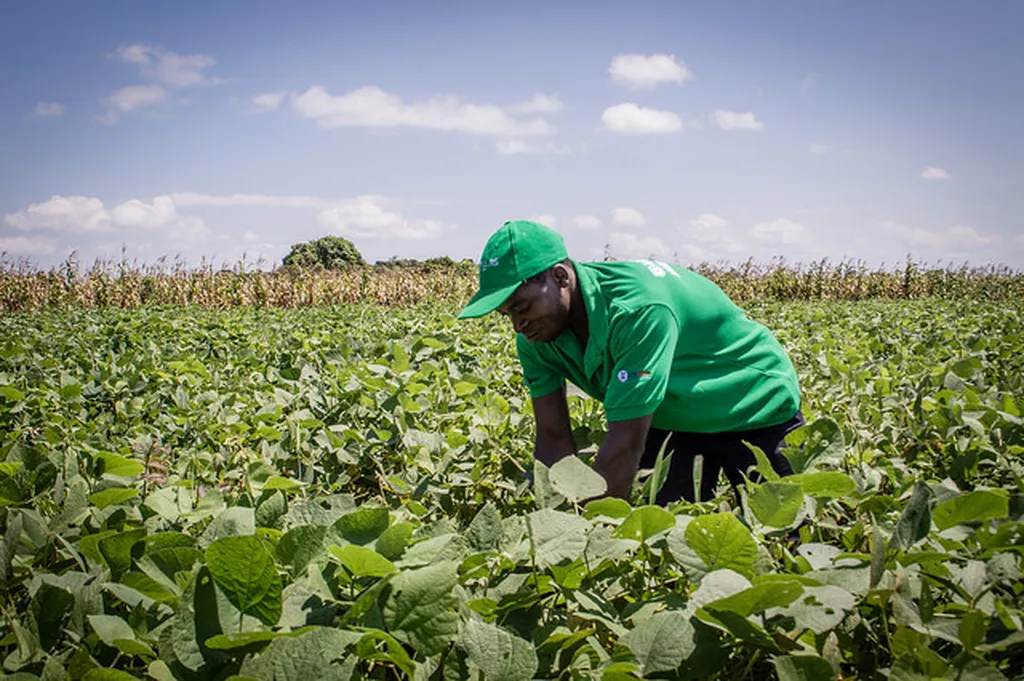In the heart of Kenya, a quiet revolution is taking place in soybean farming, thanks to a groundbreaking approach developed by an international team of researchers. This innovative method, detailed in a recent study published in *Scientific Reports*, combines multi-trait selection and genotype-by-environment interaction modeling to enhance soybean breeding programs. The lead author, André A. Stella from the Department of Genetics at the University of São Paulo, explains that this approach could significantly boost yields and adaptability for farmers in diverse environments.
Soybean is a crucial crop for Kenya, providing a vital source of protein and income for many smallholder farmers. However, the crop faces numerous challenges, including disease, pests, and varying environmental conditions. Traditional breeding methods often fall short in addressing these complex issues simultaneously. The new approach, however, integrates multiple traits—such as yield, disease resistance, and drought tolerance—into a single, comprehensive model. This allows breeders to select the most promising soybean varieties more efficiently and accurately.
“By considering the interaction between genotypes and environments, we can identify varieties that perform well across a range of conditions,” Stella explains. “This is particularly important in Kenya, where farmers face a diverse set of challenges. Our method helps to ensure that the selected varieties are not only high-yielding but also resilient to local stresses.”
The commercial impact of this research could be substantial. For the agriculture sector, the ability to develop soybean varieties that are both productive and adaptable means increased yields and more stable incomes for farmers. This, in turn, can contribute to food security and economic development in the region. The approach could also be applied to other crops and regions, potentially revolutionizing breeding programs worldwide.
Looking ahead, this research opens up exciting possibilities for the future of plant breeding. By leveraging advanced modeling techniques, breeders can make more informed decisions, leading to faster and more precise improvements in crop varieties. As Stella notes, “This is just the beginning. The integration of multi-trait and genotype-by-environment interaction modeling has the potential to transform the way we approach plant breeding, making it more efficient and effective.”
In the coming years, we can expect to see more of these innovative approaches being adopted in breeding programs around the world. The research published in *Scientific Reports* by Stella and his team is a significant step forward, offering a powerful tool for addressing the complex challenges faced by farmers and the agriculture sector as a whole. As the world grapples with climate change and a growing population, such advancements will be crucial in ensuring a sustainable and secure food supply.

